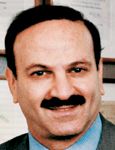- Case-Based Roundtable
- General Dermatology
- Eczema
- Chronic Hand Eczema
- Alopecia
- Aesthetics
- Vitiligo
- COVID-19
- Actinic Keratosis
- Precision Medicine and Biologics
- Rare Disease
- Wound Care
- Rosacea
- Psoriasis
- Psoriatic Arthritis
- Atopic Dermatitis
- Melasma
- NP and PA
- Skin Cancer
- Hidradenitis Suppurativa
- Drug Watch
- Pigmentary Disorders
- Acne
- Pediatric Dermatology
- Practice Management
- Prurigo Nodularis
- Buy-and-Bill
Article
Safety, quality, economic concerns persist over medspas
National report - While medical spas appear to be here to stay, many struggle simply to stay open, sources tell Dermatology Times.

Doctors and others say this validates concerns about unsupervised treatments and about facilities not overseen by core specialists, such as dermatologists and plastic surgeons.
It's also a reminder to spa owners, they say, to monitor everything - from startup costs to who's performing procedures.
As a result of financial pressures and a failure to understand consumers, 20 to 30 medspas close or seek buyers monthly, he tells Dermatology Times.
In fact, "Almost as many are opening as closing," says Jeff Russell, executive director, International Association for Physicians in Aesthetic Medicine (IAPAM) and president of Medspa Financing, a medical spa lender.

"Consumers are waking up and becoming more aware of the risks they face when they're being treated with devices that are very safe if used correctly but potentially dangerous if used improperly," he says.
However, "Competent physicians are competent physicians," says Joseph Sozio, M.D., managing partner, SkinCentre Advanced Medical Aesthetics, Hartsdale, N.Y. "But I never thought (core specialists) had to worry about competition" because core physicians' experience breeds excellence consumers will reward, he says.
Data scarce
Gauging the industry's size is difficult. According to manufacturer sources, Mr. Light says, the United States is home to about 450 free-standing medspas and another 600 to 1,000 physician offices offering some spa services.
However, he says IMSA's estimate of $1.5 billion in annual sales (for freestanding and office-based facilities combined) may be high, considering the industry's turmoil.
Mr. Russell says that, based on attendance at IAPAM's Aesthetic Medicine Symposium, the breakdown on who's running medspas is: family practitioners, 40 percent; OB/GYNs, 25 percent; internists and ER doctors, 20 percent; dermatologists and plastic surgeons, 5 percent; and other specialists such as anesthesiologists, 5 percent.
Regarding safety concerns, Dr. Geronemus estimates he treats four to five patients with complications due to unsupervised treatments weekly.

In spa-like settings, says Vic Narurkar, M.D., immediate past president, American Society for Cosmetic Dermatology and Aesthetic Surgery, "Very often, procedures performed are not appropriate or indicated, and the motivation is mostly economic." When complications occur, he adds, nonphysicians and non-core physicians "usually don't have the ability to manage them."
Dr. Narurkar says he's also seen patients who have had cosmetic treatments - without dermatologist consultations - whose basal cell carcinomas went unnoticed.





